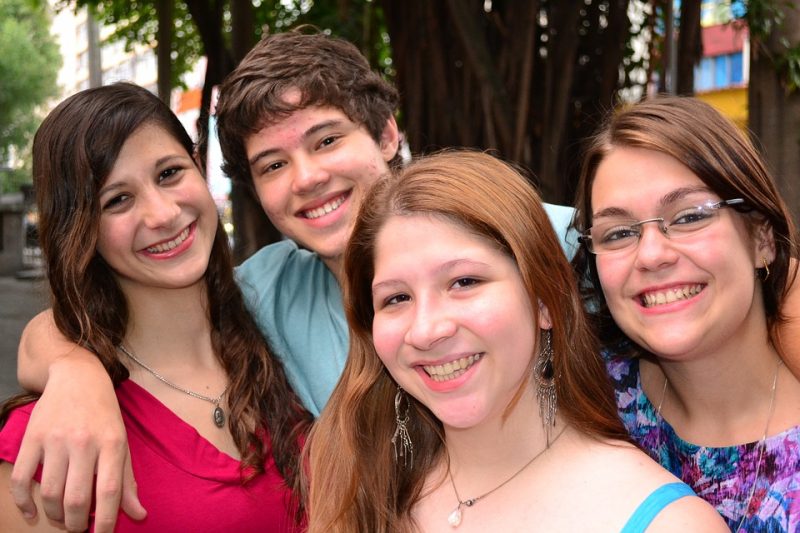
Published by Shudan Hao and Jinbo He
Shanxi University, Hunan University, and Tianjin University
These findings are described in the article entitled Profiles of parent and peer attachments of adolescents and associations with psychological outcomes, recently published in the journal Children and Youth Services Review (Children and Youth Services Review 94 (2018) 163-172). This work was conducted by Jinbo He from Hunan University and Tianjin University, Xinjie Chen from the University of Macau and Stanford University, Xitao Fan from the Chinese University of Hong Kong (Shenzhen), Zhihui Cai from Central China Normal University, and Shudan Hao from Shanxi University.
Adolescence is a very crucial, dynamic, and influential period of human development, in which attachment, both to parents and to peers, has been demonstrated to be one of the most important factors that affect adolescents’ developmental outcomes.
As a deep and enduring emotional bond that connects one person to another across time and space, attachment originally referred to the relationships constructed by the experiences of interactions between children and their caregivers. Now, it has been generalized to all critical relationships through a person’s whole life span.
Parental attachment plays a significant role in the development of every individual. Numerous research has substantiated that a secure attachment with parents predicts higher self-esteem, greater life satisfaction, and less psychological distress in children. Besides, they tend to continue to influence a person’s interpersonal relationships even in adolescence and adulthood.
Since adolescents experience huge changes both physically and mentally during this special time period, the importance of attachment is even greater. Moreover, adolescents spend more time with their peers and develop intimate, supportive relationships outside their core families. Peer attachment plays a more important role. Some researchers even claim the support of a peer group gradually usurps the influence of parents in adolescence as the result of intergenerational conflict over life styles and beliefs. Strong relationships with peers have been found to be linked with perceived self-worth, high levels of perspective taking and prosocial behavior, and decreased risk of emotional and behavioral problems.
It is pretty clear that security attachments with parents and peers both play important roles in an adolescent’s adjustment. The question that conflicted us is the associations and linkages between peer and parent attachment during adolescent development, as the previous findings on this field were inconsistent. Some scholars reported that parent attachment generally had a weak association with peer attachment, whereas others found that parent attachment, especially attachment to mothers, had a strong association with peer attachment.
In a meta-analysis, researchers found an overall moderate association between parent attachment and peer attachment. Thus, accumulating evidence has shown that parent attachment and peer attachment do not always go together. It is, therefore, especially interesting to explore whether there are subgroups of adolescents who potentially have high parent attachment but low peer attachment or low parent attachment but high peer attachment. Furthermore, if subgroups of adolescents exist, it would also be interesting to know whether and to what extent adolescents in different subgroups differ in psychological domains.
In order to explore these questions, a study involving 941 adolescents’ parent and peer attachment scores was conducted with the method of latent profile analysis which is used to identify unobserved subgroups. The results showed that four groups of adolescents with distinct parent and peer attachment were identified, with different combinations of secure and insecure parent and peer attachments.
Specifically, the first profile was labelled as Insecure Parent Attachment-Insecure Peer Attachment (P1). Adolescents in this profile had the highest level of insecure parent attachment and the highest level of insecure peer attachment. The second profile was labelled as Secure Parent Attachment-Insecure Peer Attachment (P2). The children in this profile had a moderate level secure aren’t attachment and moderate level of insecure peer attachment. The third profile was labelled as Insecure Parent Attachment-Secure Peer Attachment (P3). Adolescents in this profile had a moderate high level of insecure parent attachment and a moderate high level of secure peer attachment. The fourth profile was labelled as Secure Parent Attachment-Secure Peer Attachment (P4). Adolescents in this profile had both highest level of secure parent attachment and secure peer attachment. Thus, this study clearly demonstrated that there were different combinations of parent and peer attachment for adolescents.
Moreover, the four groups of adolescents as defined by these profiles were compared on positive psychological traits (resiliency, hope, and optimism), life satisfaction, and psychological distress. The findings showed that adolescents in different profiles are significantly different on positive psychological traits, life satisfaction, psychological distress, and gender ratios. Specifically, Adolescents with secure parent attachment and secure peer attachment (P4) scored much higher on positive psychological (i.e., resiliency, hope, and optimism), then followed by adolescents with insecure parent attachment and secure peer attachment (P2), and adolescents with secure parent attachment and insecure peer attachment (P3), while adolescents with insecure parent attachment and insecure peer attachment (P1) had the lowest resiliency, hope, and optimism.
As for the variables of life satisfaction, adolescents in P4 had the highest level of life satisfaction and adolescents in P1 had the lowest level of life satisfaction. In terms of psychological distress, adolescents in P1 showed the highest level of psychological distress, followed by adolescents in P3 and P2, while adolescents in P4 had the lowest level of psychological distress.
This study demonstrated that parent attachment and peer attachment are not always accordant with each other, and adolescents with different patterns or combinations of parent and peer attachment significantly differed on positive psychological traits, life satisfaction, and psychological distress.









